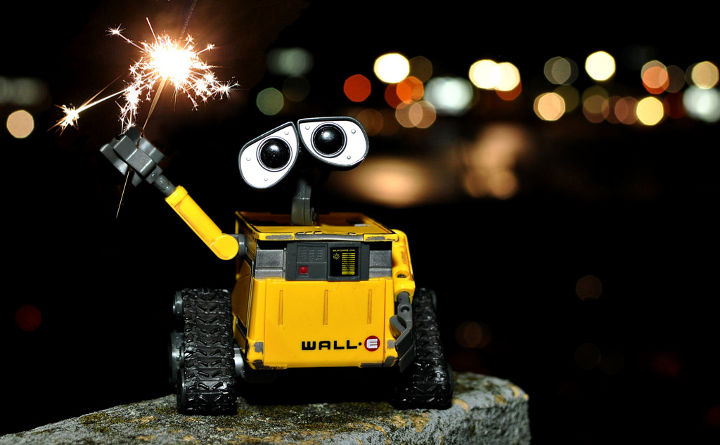Maybe it’s because we’re spending more time lounging on the couch with that cup of eggnog. But there’s nothing quite like the end of the year to give us time to reflect on the things happening around us with a slightly longer lens on. While we layer on that comfy sweater and bundle up against the shivering cold outside, we get one short moment to step back and make some sense out of the events of the year.
There’s been no shortage of noteworthy headlines in the technology sector this year. But some will stand out more than most and give us a glimpse into the larger trends brewing below. Here are just a few of the trends that shaped technology in 2016.
Self-driving cars
The competition in this space has been heating up for years and 2016 only saw more milestones reached by even more players. And what could be more fun than watching some of the best minds compete to launch driverless cars in a veritable drag race?
Prototypes and test runs finally hit the streets this year to let us get a first-hand view of what the tech can do. The world’s first fully autonomous car service launched on the streets of Singapore at the end of August thanks to MIT startup nuTonomy. In September, Uber followed suit with the launch of their own self-driving test in Pittsburgh. Self-driving truck startup Otto made their first commercial delivery of Budweiser beer across the highways of Colorado. Tesla capped the year with a forward-looking announcement that new Teslas will now come with full self-driving capability. Just don’t expect to use any of it until government regulations get a chance to catch up.
Beyond that, we saw a lot of dealmaking and investing among traditional auto industry companies trying to secure their seat on the bench. Toyota and GM built partnerships with existing ride-sharing companies while BMW expanded its own effort. Not only should we see more driverless cars hit the roads next year, we may even get some long-awaited clarity from state and federal regulators about what is and isn’t allowed.
Virtual Reality..or Augmented Reality..or Mixed Reality
For all the hoopla surrounding VR and those oversized eye masks, the big winner in the reality altering category was really the unforeseen success of Pokemon Go – something even game creator Niantic didn’t see coming. Its meteoric rise in July subsequently plummeted back to Earth almost as quickly as it came. But in that fleeting moment of glory, it did introduce AR to the mainstream population like nothing before. And we’ve all been convinced of the potential behind this field.
It was just as big a year for the VR headset enthusiasts as well. The biggest name of all, the Oculus Rift finally launched this year. And other releases like one headset by Samsung that lets you clip on your existing Samsung smartphone turned this year into one that moved VR tech from prototypes to production.
Microsoft’s much anticipated HoloLens rounded out the year with the release of its developer version. And with those shipments came the moment we were all forced to learn the difference between augmented reality and mixed reality. Yes, there is a difference. Marginally. Meanwhile, the mysterious start-up MagicLeap trails far behind with no new announcements of a launch date and whispers of problems with the technology.
Cybercrime
It might be that cybercrime had the best 2016 of all. And we don’t just mean Russia’s involvement in the Presidential election.
Some may recall one random Friday in October when you had trouble accessing big-name sites like Twitter or the New York Times. It turns out 10/21 would become the largest DDoS attack in history. Attackers used Mirai malware and enlisted thousands of unsecured IoT gadgets to join its army in a gargantuan internet siege. If this sounds scary, take heed of the FTC’s advice on securing your IoT device so your smart fridge doesn’t become an unwitting participant in the next attack.
DDoS attacks aim to bring websites and networks down by overwhelming them with traffic. But ransomware – which uses good ol’ phishing scams to install malware on your computer and take your data hostage – turned into one of the largest security worries this year. Europol warned earlier this year that ransomware is eclipsing all other forms of online theft.
None of us like refreshing our passwords anymore than we like washing our dishes when there’s one more clean cup left in the cupboard. But if you needed prodding in the right direction, Yahoo was here to remind you of how vulnerable your data really is – twice! They announced a massive breach of account data in September followed by a separate and larger hacking in December. So if you need to hear it again, it’s finally time to stop using the same password across accounts. In fact, think about signing up for a password manager.
Social Media
Social media continued its push this year to monetize and expand on experiences. Instagram unveiled its plans to turn into our digital shopping outlet. Snapchat decided its 2016 business strategy was to shorten its name and start making camera hardware. Meanwhile, Facebook decided its 2016 business strategy was to copy Snapchat’s features (we all know masks and lenses are the same thing).
Social media platforms also had to defend their flanks against mounting concern over speech and the kind of content created on their platforms.
Facebook suddenly found itself in the eye of the storm over a fake news problem following the Presidential election. And we all had to ask what their responsibility was in suppressing the spread of misinformation while still promoting free speech. Instagram took steps to combat online harassment by letting users filter out keywords. And we all had to ask why Twitter continues to let its own trolls flourish.
Artificial Intelligence
AI continued growing up this year. It can now play Starcraft and let you into buildings by looking at your face. But concern over the tech is growing just as rapidly. It already has and potentially will replace jobs once made for humans. The UN is also looking at banning it from ever being used in weapons capable of independent decision-making.
But let’s not lose sight of how relatively nascent this technology still is. Facebook CEO Mark Zuckerberg put it best in a review of his experiment building an AI assistant for his home. The assistant could learn a great many things but it was never capable of learning how to learn. And without “some fundamental breakthrough in the state of AI”, Zuckerberg felt he had reached a limit to the technology as it stands today.
Overall, it’s been a hell of a ride this year in the world of tech that seemed to jerk us along at alternating light-speeds interspersed with some crippling hangups. If you’re not still reeling from the whiplash, get ready for another year with more innovations, game-changers, and setbacks.












